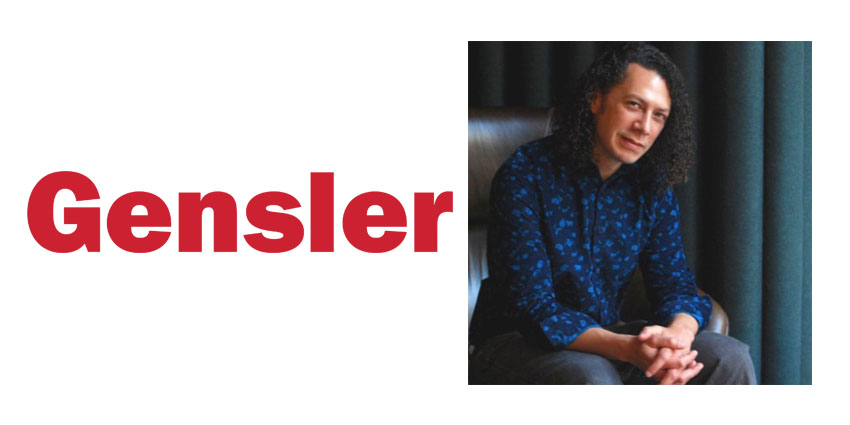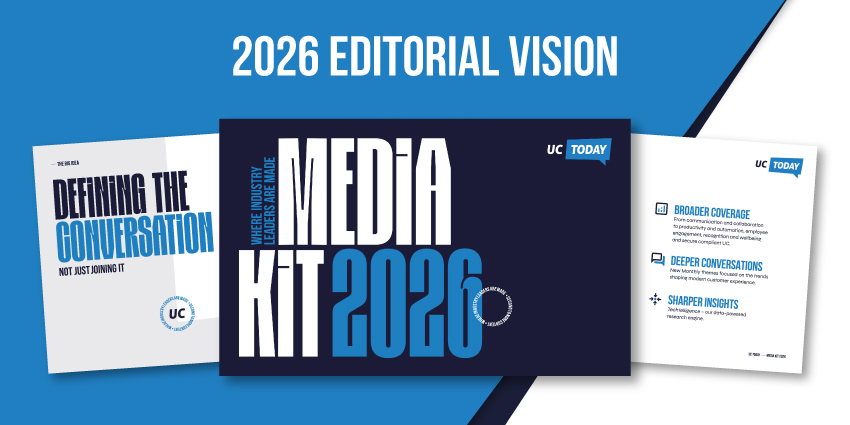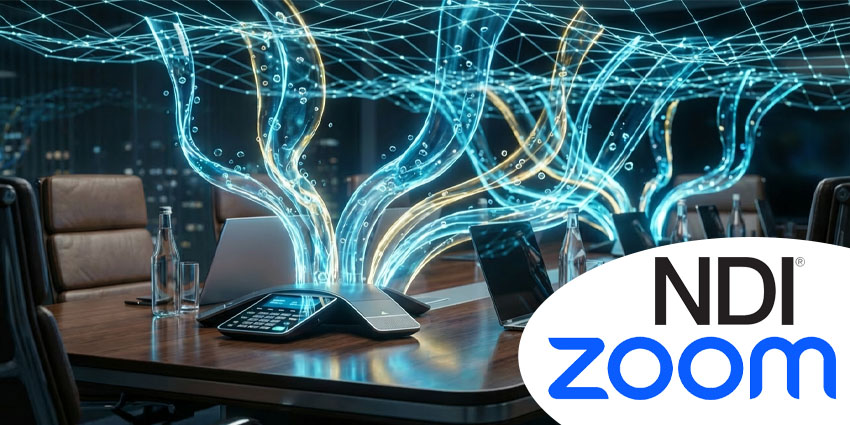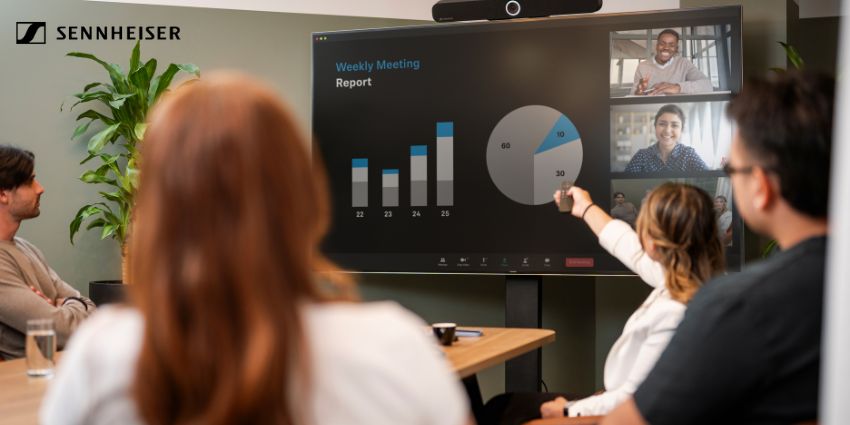One key challenge for any organisation in the hybrid work era is creating office and meeting room space that fosters collaboration and productivity for a diversity of employee working styles while maximising return on investment.
An organisation producing a successful hybrid system requires creativity, imagination, and ingenuity. If the organisation in question is Gensler, a leading architecture and design business, that’s a useful pool of in-house talent and expertise to leverage. One of the jumping-off points, from Genlser’s perspective, is deconstructing what hybrid actually means.
“One of the challenges is the word hybrid itself,” Steve Woods, Technology Director at Gensler, told UC Today. “It’s almost like a loaded word. For some people it could mean giving permission to people to stay home when they should be in the office. Hybrid, ‘return to office’, they’re bad words. Return to what? I think that what’s been important for us is developing a new language around the work we’re doing with our clients, we’re doing with ourselves, we’re trying to imbue the space with an implied purpose.”
Woods stressed that the question isn’t around hybrid—there’s that bad word again—but about work itself, and about honing space that makes it fulfilling. It begins with the space itself.
“It’s important that people understand and see how the space directly impacts or enhances their work. We’ve applied this here in San Francisco, to a few other offices, and to a few other clients. We get this question, ‘How do we address hybrid?’ We’re saying it’s really just work. How do we address work?”
“You have teams that benefit from the space in these activities. You have teams that take advantage of the fact that they’re remote, or you’ve got teams that are across the world. They’re distributed. We have principles here that are in Los Angeles today, and they need to work with us. It’s not really the right question to ask.”
Much of Gensler’s design for hybrid spaces was informed by its workplace survey, which it sends to employees twice a year. The business leveraged its own research to empower its workers and found that the majority of respondents said they came into the office to focus on their work. Gensler tried to not only accept the idea that everybody works differently but also embrace the challenge of tailoring a space to enable those different work styles.
“What we’re seeing is with space that has been properly communicated and properly designed to enhance the work, people come in, and we have the data to show that,” Woods underscored. “We have higher attendance here, and we see even more clients, and it’s true too for the other offices that we’ve done these upgrades to in other cities. So yeah, better attendance, better job satisfaction. It’s a double win.”
“We do have an in-person first philosophy, but we also know that mandates don’t really work,” Woods continued. “We’ve seen that with other firms that have mandates, and they may or may not have great attendance. The belief is that perhaps more can be done to make the space compelling, not just in terms of foosball tables and whatnot, but to directly impact and enhance the product that we’re trying to create there.”
Woods’s Journey To Gensler
Woods has had an interesting journey himself. In college, he was a multidisciplinary visual performance arts major. He acted, designed sets, created films, and got “really into 3D environmental design”. He initially imagined himself working for a gaming company before realising that it was possible to build “real spaces, cool spaces in real life”.
He started working on homes for wealthy Los Angeles residents, which culminated in several interesting opportunities. “I got to a point where basically anything that plugged in or moved or turned on, I had a hand in designing,” Woods expanded. “So, I was able to take some of that learning and those approaches and how we approach our immersive experiences here with our workplace technology at Gensler.”
“I developed the strategy and workflows around the tech so that the people who work with them can understand them, use them, and take advantage of the value that we’re trying to create with these systems.”
How Does A Design And Architecture Business Use UC And Collaboration Tech?
And what about the tech stack itself? How does a renowned design and architecture firm deploy and utilise UC, collaboration and AV technologies?
Speaking specifically of Gensler’s San Francisco and Northwest offices, as its offices across different regions apply different policies, Woods highlighted that the business has “gone as platform agnostic as we possibly can”.
“We’ve got hundreds of clients; they have their own communication preferences and UC tools and collaboration tools, and we really wanted a system that could pivot literally throughout the day,” Woods added. “One meeting could be one way, and another meeting could be another, and so we’ve designed our workstations and our conference rooms to behave as much as they can like a peripheral.”
“So you go to your desk, you plug in, you’ve got your dual screen, you’ve got your headset, you go in the conference room, you plug in, you’ve got the dual screen and the microphone and the camera. The reasoning behind that is that a lot of the workflow is based on our machines, and in order to simplify the conversation around technology, we packaged that with these ‘work modalities’ we call them.
“So, as you move about the space, you are choosing your work posture. Whether you’re at your desk, in a private room in the back of a social buzzy space in the front, or in the room itself, you can actually choose how the room behaves slightly so that you know where to position yourself and in the work that you’re creating.”
It’s a remarkable application of the most advanced meeting room technology and best practices, complemented by a naturally creative vision. Asked about further use cases for UC and collaboration that are singular to the architecture and design world, Woods told a compelling story cautioning against using “use case” as a phrase and instead suggesting “capabilities” as a more pertinent alternative.
“I was with (engineering and professional services firm) WSP beforehand,” Woods said. “I was an engineer for visual, security electronics, and smart building systems, and we would have exhaustive use case charrettes where we would come up with all of these personas. We would create all these use cases to drive rationale for the tech, but it created an almost infinite circular logic where we were losing sight of the why in the process.”
“So, we’re flipping the script a bit on use cases and starting with capabilities. When you see ads on TV for cars, they might rattle off features and specs, but the imagery is really trying to sell you on the promise of luxury, adventure, or ease as you’re moving about the city. We wanted to see how we could adapt that into just the naming of our spaces.”
“So let’s talk about conference rooms for a second. Rather than small, medium, and large conference rooms, we’re using words like co-creation suites, team zones, and exchanges, and the naming is actually meant to imply some value that we’re bringing to the dynamic that we’re hoping to see unfold in these spaces.”
“We believe that understanding these high-level capabilities enables us to activate spaces in a way that where maybe sometimes they would go underutilised or unutilised. Clients are interested in seeing their spaces get used. The occupancy is something that is of concern to people.”
With better context, Woods emphasised that he and his team are creating a situation that will directly benefit the end users’ work.
“Then, with the technology, we’re in the business of trying to shoot the scene like a little TV studio,” Woods expounded. “We don’t want to just catch faces. We want to catch the dynamic between the people and how they are relating to the space, which we think is a character in the story that we’re creating here.”
The AI Experiment
As with every organisation, especially in the creative industries, Gensler and Woods have grappled with AI and what applications it can serve to best suit business needs and enable staff productivity.
“We have definitely deeply considered AI,” Woods said. “We actually chose to minimise its role in this space as much as we felt was reasonable. It was important for us to create a highly predictable experience so that people could begin to map the function and the adjacencies in their heads. Really, what I mean is to think about how the behaviour could change throughout the day.”
“This was actually part of our change management process. We recruited the teams to understand what the systems were doing, why they were doing it, and, honestly, how to defeat it if they felt compelled to. We really wanted people to be enabled, as much as we could, to get out of their way so they didn’t have to think about it at all.
Woods referenced one of his favourite books in this context, The Design of Everyday Things. The cover shows a discordant image of a teapot with a handle under the spout, illustrating the nuances of design that often get lost in the relentless hustle of modern life.
“Throughout the day, there are things like doors that feel like they should be pulled, and you have to push them, and little things like that that we tried to automate out of the day,” Woods said of Gensler’s approach to workflow systems. “We’ve all gotten used to running calls through the laptop and selecting peripherals, which is your cognitive load, and so we applied that formally.”
However, Woods emphasised that Gensler hasn’t shunned AI. Instead, he described its AI experience as an “experiment at, say, passive resistance”.
“‘We hear you, we see you, technology, come on in’, but at the same time, we want to be mindful about how it’s applied and understand if there is maybe a non-AI way to approach it or even a non-tech way to approach the result that we’re after.”
Back To Basics
If there’s one area Woods would like to see technology vendors prioritise, it’s to forego the growing trend of all-in-one, expansive solutions and return to their roots.
“If I could wave a magic wand, I would ask vendors to focus on delivering higher-quality audio and video experiences, if we’re talking about UC here, and stay out of the workflow lane,” Woods explained. “I think there’s a tendency for technology companies to feel like they need to take over in terms of their ecosystem.”
“I see how that’s beneficial from a procurement, maintenance, and support point of view, but it has created a couple of unusual side effects. For example, I have people who ask me if they have a conference room, and they want cameras everywhere so they can put everyone into a box so it’s more like Microsoft Teams. That was their answer for equity.”
Woods suggested that Gensler is conforming its work to the limitations or capabilities of the software and the hardware rather than the other way around.
“So I would love it to be true where we can get back into the business of saying, ‘Hey, we’ve got really high-quality audio. You can be anywhere, you can sit anywhere, and anyone who’s involved can be seen and heard,'” Woods said.
“Again, the dynamic that we are capturing is highly visible so that people who aren’t in the office or who are unable to come to the office benefit from the mechanical advantage that we all believe is possible by getting together. I think there’s a lot to be said about going back to the basics: quality, straightforward solutions.”
What Next?
In this constantly evolving industry, a cutting-edge organisation like Gensler is forward-thinking about its technology investments. What next for the business? Despite Woods and the company’s understandable wariness about AI, he stressed again that they haven’t shunned it, and that it might be a tool they revisit once they have a firmer idea of how’d they’d utilise it.
“AI is going to emerge in our machines,” he explained. “We’re going to see more applications that leverage it and more workflows that are enhanced by it. So, we don’t want the hardware to get in the way of that software progression.”
Being an architecture and design firm, real estate is also a critical component in Gensler’s thinking.
“In this city, I’m very pleased that we have invested in a very high-end, robust, configurable solution that, hardware-wise, could last seven years, maybe longer,” Woods said.
“Good optics is good optics. Good audio is good audio, and that never goes out of fashion. But we’ve also enabled ourselves to innovate on the platform itself. So the investment is going to come from the thinking that we can create together as a team, as folks here interact with the space and they go, ‘What if it could do this or what if it behaved this way in this situation? I try to do this kind of engagement with our client and how do we bring the Seattle office into that?'”
“It’s a lot about anticipating what we call these ‘desire paths’. If you go to a campus or college, you see beautiful landscape architecture and a trail right through the grass. That’s what people want and need in the space. So the long and short of this is that we’ve created enough infrastructure for us to be able to react to those natural tendencies that we imagine we’re going to see happen more and more.”
“So, the long story cut short is that our investment is going to be the thinking that we can have now in these spaces and how we can adapt.”
The story continues, as it began, with space.







